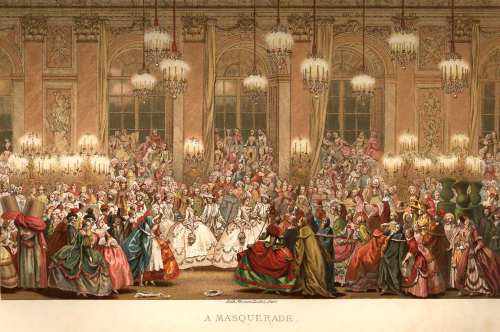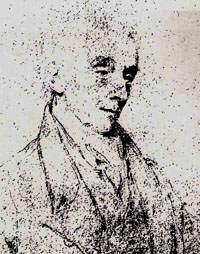
The following review was just published in Burney Letter, 20:1 (Spring 2014):19-20. The Early Journals and Letters of Fanny Burney. Vol V. 1782-1783, edd. Lars E. Troide and Stewart J. Cooke. Montreal & Kingston: McGill-Queen's University Press, 2012. Pp. I-xvi +509. $135.00

In the last couple of years reading Burney's life-writing has become much more problematic and potentially more interesting than reading her novels because recent Burney scholarship has significantly altered our understanding of the sources and nature of Frances Burney D'Arblay's voluminous life-writing. It has been valued as a vivid and perceptive record over a long span of time by a woman who lived among important people and experienced first-hand some of a revolutionary era's key milieus and catastrophes. Now Lorna Clark, Clare Harman, John Wiltshire and Ingrid Tieken Boonvan have all demonstrated that we must take into account that, like much life-writing, Burney’s journal accounts frequently consist of semi- and extensive fictionalizing. Its articulate heroine, Fanny (the name is useful for distinguishing the character in the diary from the implied author outside it) plays the role of a frequently frustrated, deceived and constrained protagonist -- our focal presence, who is occasionally betrayed, but deservedly wins most of her desires by a carefully controlled moral behavior. It is not metaphoric labeling to call this 25 volume work an intermittent autobiographical epistolary novel. The process of analyzing its phases of epistolarity in terms of its sophisticated fictional techniques has already begun.
This new angle calls out for more bibliographical and autobiographical studies of this trove of manuscripts written, re-written, organized and re-arranged by Burney at different stages of her life, interspersed with materials by other people (with an eye to the effect of placement). The alterations make them no longer private or confidential papers (I use Donald Reiman's terminology in his study of modern manuscripts) but prepared texts intended for a general public. The initial and influential edition (focusing from 1778-1791) by Burney's niece, Charlotte Barrett, is a family product (and censored accordingly) as well as a reflection of Victorian ideals for women and women authors. Then at the cusp of the 20th century there's a return to the manuscripts with an eye to publishing those from the earlier period not included in Barrett's volumes, and there are re-printings of Barrett in the form of different size abridgments with differing accompanying paratexts and connectives, following various scholarly norms at the time as well as the needs of particular publishers. Finally, starting in the 1970s, Joyce Hemlow's determined return to all the manuscripts, beginning with July 1791, which would include retrieval of as much censored material as possible, followed by different general editorships for the rest of the manuscripts, now re-edited, re-framed, annotated, according to later 20th century scholarly norms. The thing to notice is in each re-grouping general and particular attitudes (however impeccable and unbiased when it comes to retrieval) are different as reflected in the different titles of the series and re-namings of Burney, and re-divisions of the manuscripts.
This volume, part of the early series under Lars Troide's general editorship, presents for the first time to readers who have not had access to the manuscripts much material on Burney's revising of Cecilia, on Burney and Thrale's relationship (Thrale's letters are inserted where it's felt appropriate) and the long contradictory or hesitant courtship (as I read it) of our character-heroine Fanny by George Owen Cambridge, which takes place across more than half the volume (p 212 to the end). Hitherto this material was wholly omitted (obliterated, cut up, pasted over); so too the much briefer incident of what Burney takes to be the attraction of Edward Francesco Burney to her while he painted her. Readers' views of Camilla which mirrors the first painful relationship may now change.
But it is now not only a question of the relationship between a novel and “life”; the question is not just what George and his father, Richard, or Burney's cousin meant but what kinds of truths Burney's elaborations from memory and her imagination reveal. How much of what we have here are literally lies, and what is the nature of the truth this autobiography produces. When Fanny as a character in the texts will say “now I am writing to the moment” (225, alluding to Richardson's formulation), I suggest, Clarissa-like, she is tapping into what we would call the unconscious, justified to her by her overt stance as literal reporter (even if she and her sister and most faithful reader, Susanna, knew what she was writing was partly a novel). It's time to start re-contextualizing Frances Burney D'Arblay with other women who wrote significant partly fictionalized life-writing, e.g., Lillian Hellman (Fanny refuses outright to discuss politics with Mrs Montagu's son, but that does not mean her work is not continually and alertly politically engaged as can be seen in her remarks on novels she reads), and to read and apply how such women see their and others' life-writing (e.g., Virginia Woolf, Doris Lessing, Muriel Spark in her Loitering with Intent) to Burney's.
As I read the several times re-configured materials in the fifth volume, I found myself asking when I should take a set of passages to be written, as they clearly show re-writing and contextualizing which springs from Burney's hindsight years later (e.g., a poem in praise of Burney by her father saved since 1782 is copied out into her manuscripts in 1822, without attribution, not far from where she says “how tired she is of copying out Cecilia” and how anxious about how it will be received). I compared the annotations of the fifth volume to Betty Rizzo's for the fourth volume, The Streatham Years, Part 2, 1781-82, and found them to be longer, slanted differently; they implied different conclusions about some of the key people Fanny interacts with from the annotations in the fifth volume. In the fifth volume Hester Thrale's romance with Piozzi is obliquely and hostilely represented by Burney in contrast to what seems to be Mrs. Thrale's genuine friendship (though this has elsewhere been disputed by modern scholars) and trust and need of her protégé Fanny, and we can read Burney's disloyal letters to Thrale's older daughter. Here the placement of an annotation can shape our responses to the material, for example, the juxtaposition by Troide and Stewart of Burney regaling her father with Hester Thrale's strong praise from Johnson on 13 July about Cecilia, with Thrale's decidedly critical remarks written 17 days later in her diary material now called Thraliana (253n).
What's at stake here is taking into account the nature and complexity of autobiographical art, and, as is common in earlier women's cases, the relationship of the original material to posthumous and much later more complete editions. Autobiographies are not self-contained books where presumably (as in a novel) you have all you need to know about a character within a single text. The fifth volume of the Early Journals and Letters contains Fanny's first meeting with Mary Delaney, her introduction to the Duchess of Portland, Delaney's (we now realize since Rizzo's Companions without Vows) demanding and (with respect to Delaney's hopes for a pension) misleading patroness. We may study the incidents to understand attitudes towards Delaney's “paper flowers,” but here we also have the first steps towards Burney's years at the court of George III. The volume includes the vociferous objections of Lady Llanover, Delaney's great-great niece to Burney's accuracy (283), and a second version of the meeting (in an appendix), which we may compare with Lady Llanover's edition of Delaney's correspondence (another family product). In studying the divergences we can discern how flattered and eager was the ambitious author of our text (Frances Burney) to show herself elevated by her new associations. We should ask how far was Burney early on complicit in Delaney's placing Burney at court? We watch our Fanny exhaust herself and say how she wishes the task of Cecilia were over, would not undertake another, complain how it takes from her time for life-writing to her beloved sister, Susanna Burney Phillips. I suggest that the tirelessness with which Burney also later reports the extravagant praise and from whom (e.g., Edmund Burke) may be here be seen as a function of her awareness of how marginal women authors and their novels were (54). Delaney is more than a mother substitute. I would figure into the intense admiration Burney feels for Delaney her awareness of Delaney's prestige and comfortable life-style (as it must've seemed), and Burney's disappointment with the money she made (recorded here), just £250 of which £50 was at first withheld.
Burney's new association with Delaney occurs alongside Fanny's welcome into different groups of bluestockings, which she also dramatizes, though somewhat less enthusiastically. Burney provides memorable (if often distinctly unsympathetic) portraits of a number of these women, some of whom did become genuine later friends (for example, Mrs Ord), and acute socially critical vignettes. She continues Fanny's special relationship with Johnson, an aging, very sick old man, but presented here mostly as someone whose irritable truth-telling alienates entire groups of people although he does long for the distraction of their company and conversation. He is presented too as her devoted fan, but Fanny in the life-writing is embarrassed by him. The English world of opera, Burney's love of its music, how as Fanny she responds to operas seen over and over again, and her relationship with singers (Gasparo Pacchiarotti) are all also delineated in complicated ways.
Last, but by no means least to Burney, we see her awed worship of her father, and (connected) adamant shameless (continuously sneering) dislike of his second wife, her stepmother; her close relationship to Samuel (“Daddy”) Crisp, a second father and authoritative mentor: her valuing of Chessington Hall, the retired life there (anticipating her contentment in Camilla cottage) and its denizens. Charles's disgrace and new wife are part of the family material. We see the individuals and milieu making up George Owen Cambridge's family group too. Most important of all, Susanna Burney Phillips is indirectly presented through Fanny's muted worrying and as the beloved reader the journal packets are prepared. This relationship may be said to provide the excuse for this volume's existence and it shaped the original disposition of materials (which Burney later came back to and attempted to censor).
It's in the fifth volume Samuel Johnson responds to Mary Monckton's insistence that she is justified in making Johnson “sit in a Groupe,” because “Miss Burney says you like best to sit in a Circle,” “Does she? Said he, Laughing; Ay, never mind what she says, don't you know she's a writer of Romances?” Reynolds's quick qualification, “She may write Romances, & speak Truth” is often cited next and it may be that Reynolds is referring to Burney's novels, and offering a more sophisticated understanding of truth than literal accuracy, but Johnson is ironically commenting on Burney's description of himself (196-97) in literal life. How we react to the newly problematized nature of Burney's life-writing depends on what we think Burney studies are for, and how we want them to function.
Ellen Moody
